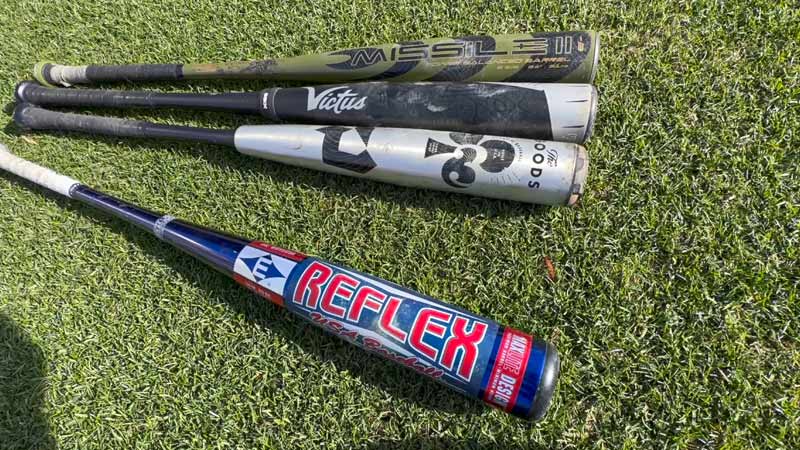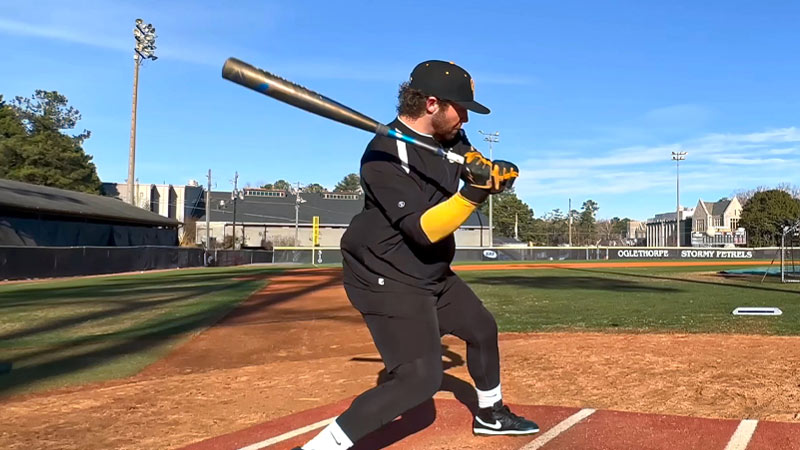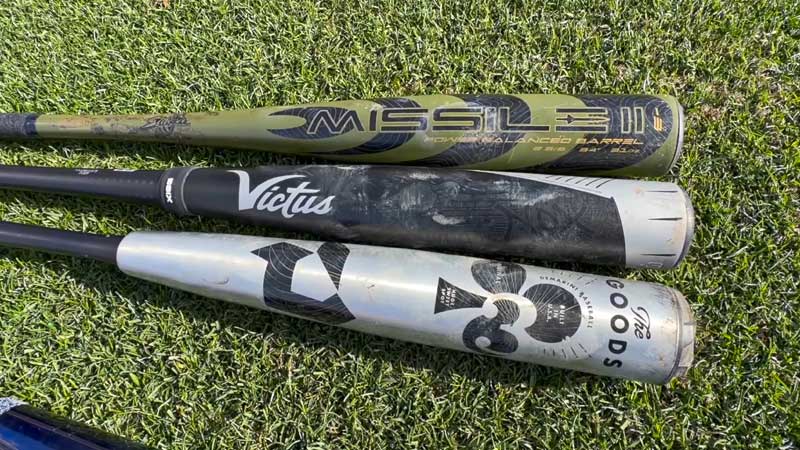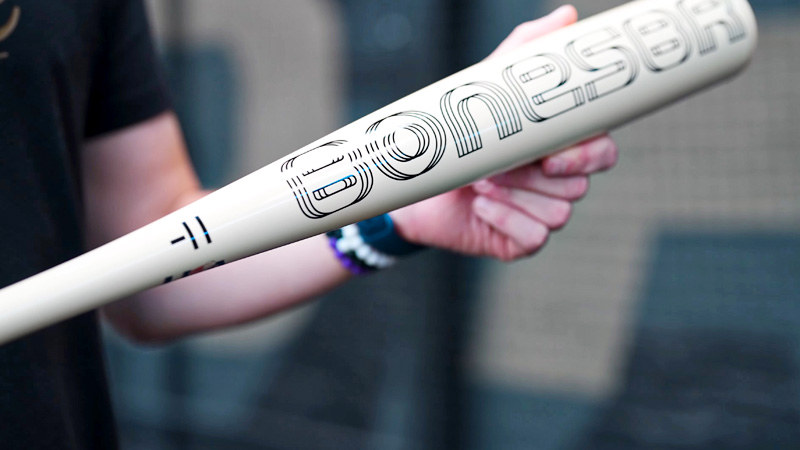College baseball is a beloved and competitive sport, showcasing emerging talent and providing a stepping stone to the big leagues.
One of the most intriguing aspects of college baseball is the use of metal bats, a practice that has sparked numerous debates and discussions.
In this blog post, we delve into the reasons why college baseball programs favor metal bats over traditional wooden ones.
We’ll explore the performance advantages these bats offer, such as increased durability, cost-effectiveness, and player development benefits.
Moreover, we’ll address the safety concerns associated with metal bats and how regulations like BBCOR strive to strike a balance between performance and player well-being.
By understanding the factors that influence the choice of metal bats in college baseball, we can gain insights into the dynamics of the sport and the unique challenges it presents. So, stay focused.
The Evolution of Baseball Bats
The evolution of baseball bats has witnessed significant changes over time. In the early days of the sport, players used handmade wooden bats with flat, round heads.
As baseball gained popularity, bat design evolved to enhance performance.
In the late 19th century, players started using thicker and heavier bats, transitioning from flat to round handles.
The most substantial transformation occurred in the 1970s when aluminum and composite materials began replacing traditional wood. These modern materials offered greater durability and increased hitting power.
Aluminum bats, in particular, became popular in youth and amateur leagues due to their affordability and superior performance.
However, in professional baseball, wooden bats have remained the standard, with regulations in place to ensure fair play.
Why Does College Use Metal Bats?
Colleges and universities predominantly use metal bats in their baseball programs for several reasons:
Durability
Metal bats, typically made from aluminum or composite materials, are more durable than their wooden counterparts.
College baseball teams play numerous games and conduct extensive practice sessions throughout the season, making durable equipment crucial to withstand wear and tear.
Metal bats can last longer and withstand the rigors of college-level play.
Cost-Efficiency
Metal bats are more cost-effective for college programs. Wooden bats tend to break or crack, necessitating frequent replacements, which can strain a team’s budget.
Metal bats, on the other hand, have a longer lifespan, reducing the overall equipment expenses for college baseball programs.
Performance Benefits
Metal bats often offer superior performance characteristics, such as increased bat speed and a larger sweet spot, which can lead to more consistent hitting.
College players, looking to improve their skills and achieve better results, may prefer the enhanced performance that metal bats provide.
Safety
Metal bats are designed with safety features like BBCOR (Batted Ball Coefficient of Restitution) regulations that limit the exit velocity of the ball off the bat.
This helps reduce the risk of injuries to pitchers and infielders who face line drives at close range. Safety is a paramount concern in college baseball, and metal bats help mitigate potential dangers.
Player Development
Metal bats can aid in player development by allowing hitters to become more comfortable at the plate and work on their swing mechanics.
With a larger sweet spot and greater durability, players can focus on honing their skills without the added pressure of frequently breaking or damaging a wooden bat.
Performance and Popularity of College Baseball Metal Bats

The performance and popularity of college baseball metal bats are significant, and here are several key points to consider:
Performance Advantages
- Increased Bat Speed: Metal bats are known for their lightweight design and typically have a larger sweet spot, allowing players to generate higher bat speed. This increased speed can result in more powerful hits and improved offensive performance.
- Larger Sweet Spot: The larger sweet spot on metal bats helps players make more consistent contact with the ball. This means that even off-center hits can result in better outcomes, contributing to higher batting averages and power numbers.
Offensive Productivity
- Enhanced Offense: The performance advantages of metal bats have led to increased offensive productivity in college baseball. Batters can hit the ball farther and with more consistency, resulting in higher-scoring games and more exciting play for fans.
- Attraction for Fans: The higher-scoring games and the excitement generated by metal bats can make college baseball more appealing to fans, both in attendance and on television. The potential for more runs and home runs creates a more entertaining and engaging experience.
Player Development
Metal bats can aid in player development, allowing hitters to focus on improving their mechanics, timing, and approach at the plate.
The ease of using metal bats can lead to better-rounded, more skilled hitters, which is crucial for player development at the college level.
BBCOR Regulations
To balance the performance advantages of metal bats, college baseball follows BBCOR (Batted Ball Coefficient of Restitution) regulations.
These regulations limit the exit velocity of the ball off the bat, enhancing player safety by reducing the risk of injuries to pitchers and infielders.
Popularity Among Players
Many college players prefer using metal bats because of the performance advantages they offer.
These bats can make the game more enjoyable, and players often have a stronger comfort level with them, given their familiarity and success with metal bats in their earlier baseball careers.
The performance and popularity of college baseball metal bats are closely linked.
The Safety Debate of Metal Bats College Baseball
The use of metal bats in college baseball has been a subject of safety debate for several reasons:
Ball Speed and Player Safety

Increased Ball Speed: Metal bats are known for their ability to generate higher exit speeds, which can result in line drives and batted balls traveling at significantly faster velocities.
This can pose safety concerns for pitchers and infielders, who have less reaction time to defend against these hard-hit balls. Injuries to players, particularly pitchers, have been a significant concern.
Pitcher Vulnerability
Pitcher’s Safety: Pitchers are particularly vulnerable to line drives back to the mound. The increased ball speed off metal bats can reduce a pitcher’s reaction time, potentially leading to serious injuries.
While protective gear has been introduced, concerns persist about the adequacy of such measures.
Infielder Safety
Infielder Reactions: Infielders, especially third basemen and shortstops, face a higher risk of injury due to their proximity to the batter.
The quick reflexes and agility required to field hard-hit balls become even more crucial when metal bats are used. Safety measures, like protective screens, have been implemented to mitigate these risks.
BBCOR Regulations
Balancing Performance and Safety: To address safety concerns, college baseball implemented BBCOR (Batted Ball Coefficient of Restitution) regulations, which limit the exit velocity of the ball off the bat.
While this has helped reduce the risk of injury, it remains a point of debate as to whether these regulations are sufficient to ensure player safety.
Player Preference vs. Safety
Player Preference: Many college players prefer the performance advantages of metal bats, as they can result in better offensive statistics.
However, this preference must be weighed against safety concerns. The debate often centers on whether the potential increase in safety with wooden bats justifies the performance trade-offs.
The safety debate surrounding metal bats in college baseball revolves around the increased ball speed and the potential risks it poses to players, particularly pitchers and infielders.
Regulations and Standards of Baseball Metal Bats

Regulations and standards for baseball metal bats are essential to maintain fairness, safety, and uniformity in the sport.
Here are several key points regarding these regulations and standards:
BBCOR (Batted Ball Coefficient of Restitution)
- BBCOR Standard: The most significant regulation for metal bats in both college and high school baseball is the BBCOR (Batted Ball Coefficient of Restitution) standard. BBCOR measures the “trampoline effect” of the bat and sets a limit on how much energy can be transferred to the ball upon impact.
This regulation aims to make metal bats perform more similarly to wooden bats, enhancing safety for pitchers and infielders.
- BBCOR Certification: All metal bats used in high school and college baseball must undergo BBCOR certification, ensuring they meet the mandated performance standards.
Bats that do not pass this certification are deemed illegal for use in official games.
Length-to-Weight Ratio (Drop)
Drop Limit: In addition to BBCOR standards, metal bats must adhere to regulations related to their length-to-weight ratio, often referred to as the “drop.” This is the numerical difference between the length of the bat in inches and its weight in ounces.
For example, a bat with a length of 33 inches and a weight of 30 ounces has a -3 drop. High school and college baseball leagues typically impose drop limits to prevent overly light and powerful bats.
Barrel Diameter
Maximum Diameter: Baseball organizations also regulate the maximum diameter of the barrel of metal bats.
In college baseball, for instance, the NCAA sets a limit on the barrel size to prevent an unfair advantage in terms of hitting surface area. This ensures that all metal bats are subject to similar performance constraints.
Certification Marks and Labels
Required Markings: Metal bats used in official games must display the necessary certification marks and labels, including the BBCOR certification stamp, drop information, and any league-specific logos or labels.
These markings help umpires, coaches, and players verify that the bat complies with the established regulations.
Testing and Compliance
Quality Control: Manufacturers of metal bats are required to adhere to stringent quality control processes to ensure their products meet the specified regulations and standards.
Bats must undergo rigorous testing for BBCOR compliance, drop limits, and barrel diameter to be deemed legal for play.
These regulations and standards for metal bats are designed to create a level playing field in terms of performance and safety.
FAQs
Why does college baseball use metal bats?
College baseball utilizes metal bats primarily for cost-effectiveness and player safety. Metal bats are durable and cost less to replace than wooden bats, making them more affordable for college programs.
Additionally, they are safer due to a larger sweet spot, reducing the risk of broken bats and injuries.
Why do they use metal bats in college baseball?
Metal bats are employed in college baseball for their practicality and performance benefits. These bats are more durable, requiring fewer replacements, and they enhance offensive performance by providing a larger sweet spot.
This allows for better hitting and scoring opportunities, making the game more exciting for players and spectators.
Why do college baseballs use metal bats?
College baseball opts for metal bats for economic reasons and to maintain a competitive balance among teams. Metal bats are cost-effective as they last longer than wooden bats, reducing the financial burden on college programs.
They also level the playing field, ensuring that players of all skill levels can benefit from the bat’s performance advantages.
What are the advantages of using metal bats in college baseball?
Metal bats in college baseball offer several advantages, including improved durability, cost-effectiveness, and enhanced offensive capabilities.
They have a larger sweet spot, reducing the chance of broken bats and injuries, and their performance benefits contribute to more exciting and high-scoring games.
Are there any drawbacks to using metal bats in college baseball?
While metal bats have their advantages, they also face criticism for their potential to produce high-speed batted balls that may be a safety concern for pitchers and infielders.
Some argue that these bats can lead to an imbalance between pitching and hitting in the game, affecting the integrity of the sport.
Wrapping Up
In the world of college baseball, the choice of using metal bats has been a topic of much debate, and as we’ve explored, it’s a complex decision with various considerations.
The advantages, such as durability, cost-efficiency, and enhanced player development, make metal bats an attractive option for college programs.
These factors contribute to improved gameplay and player development, making college baseball more exciting and competitive.
However, the safety concerns surrounding metal bats, particularly for pitchers and infielders, have led to the implementation of critical regulations like BBCOR, striving to create a safer playing environment.
The use of metal bats in college baseball continues to be a point of contention, and opinions on their place in the sport vary.
Ultimately, the decision to use metal bats in college baseball comes down to a delicate balance between performance and safety, which reflects the ongoing evolution of the game while preserving its traditions and character. Thank you.







